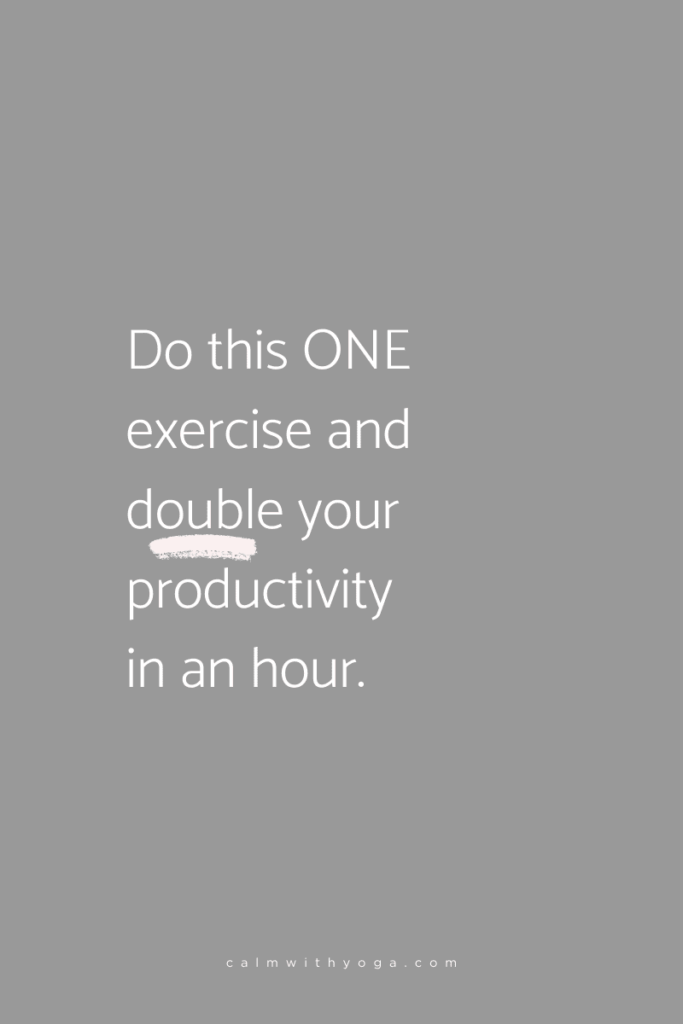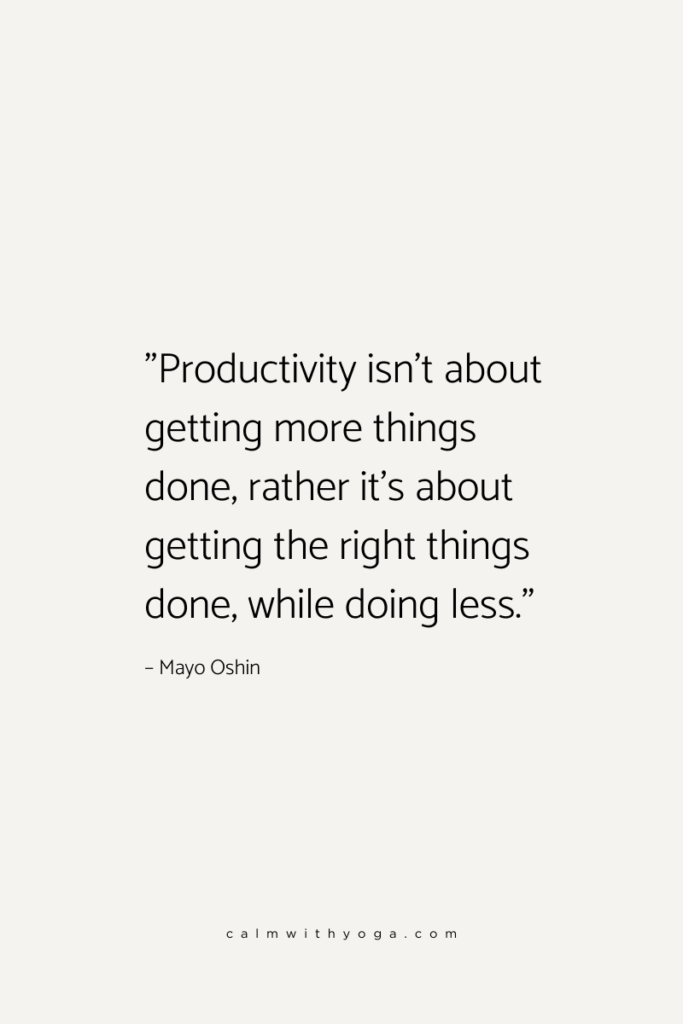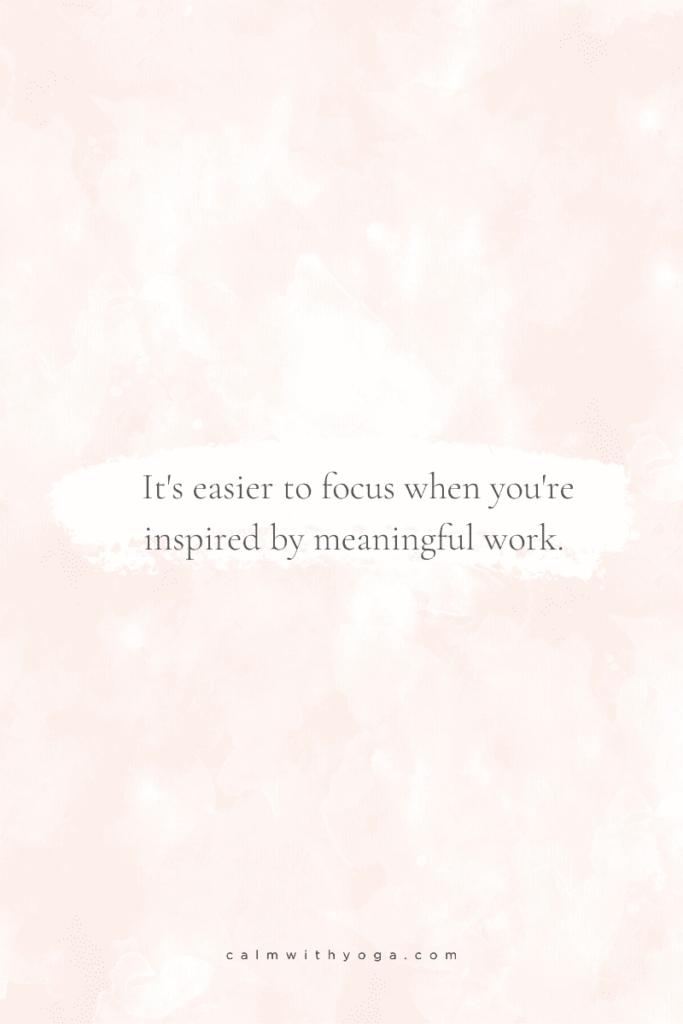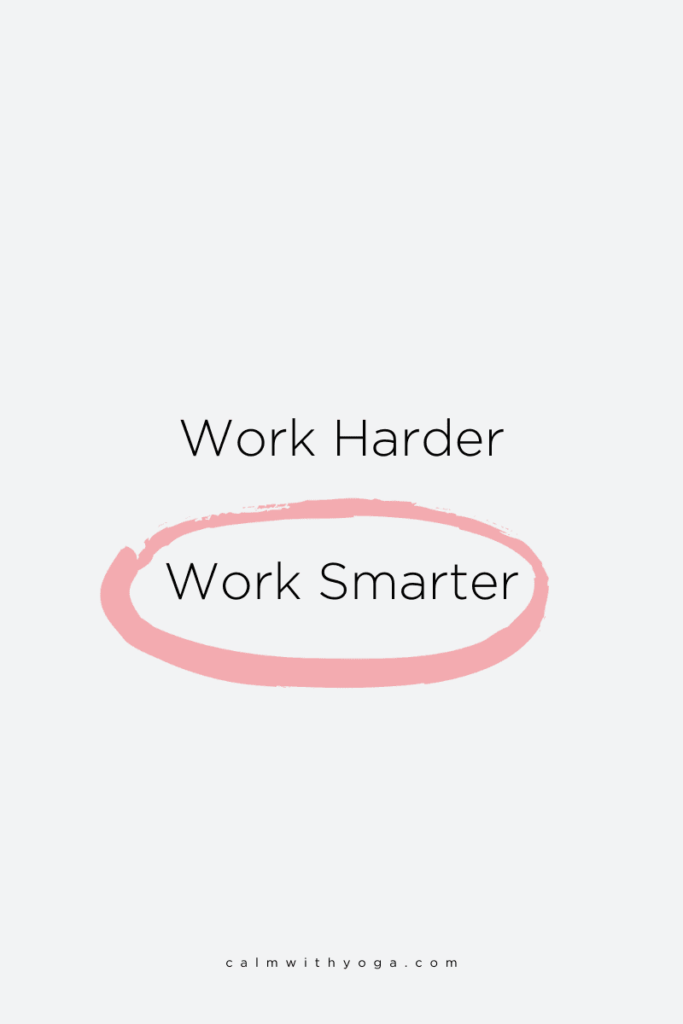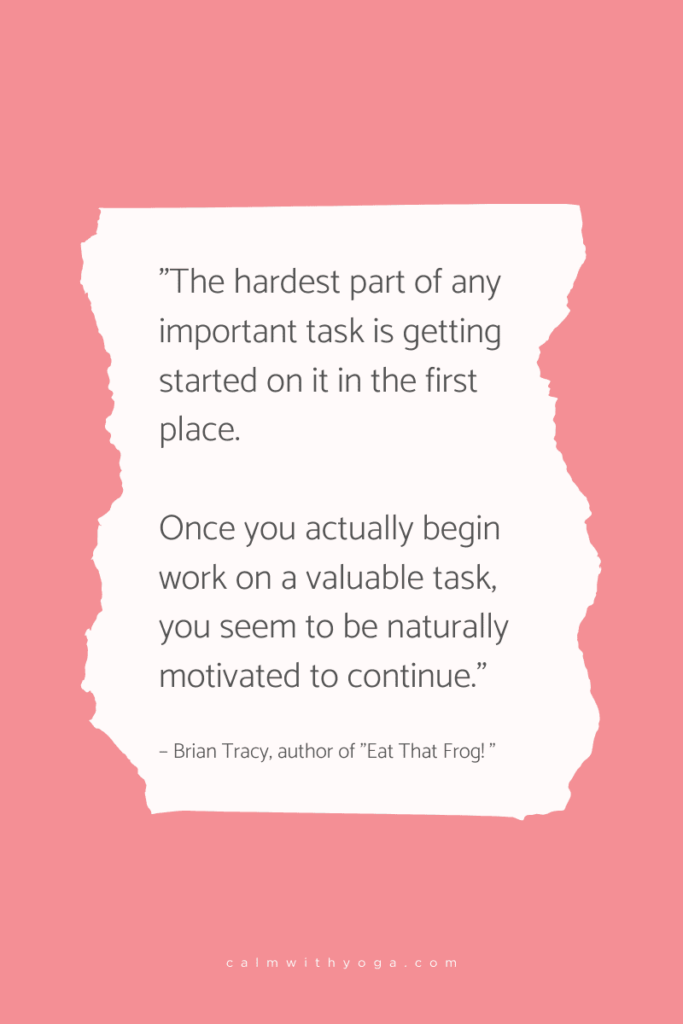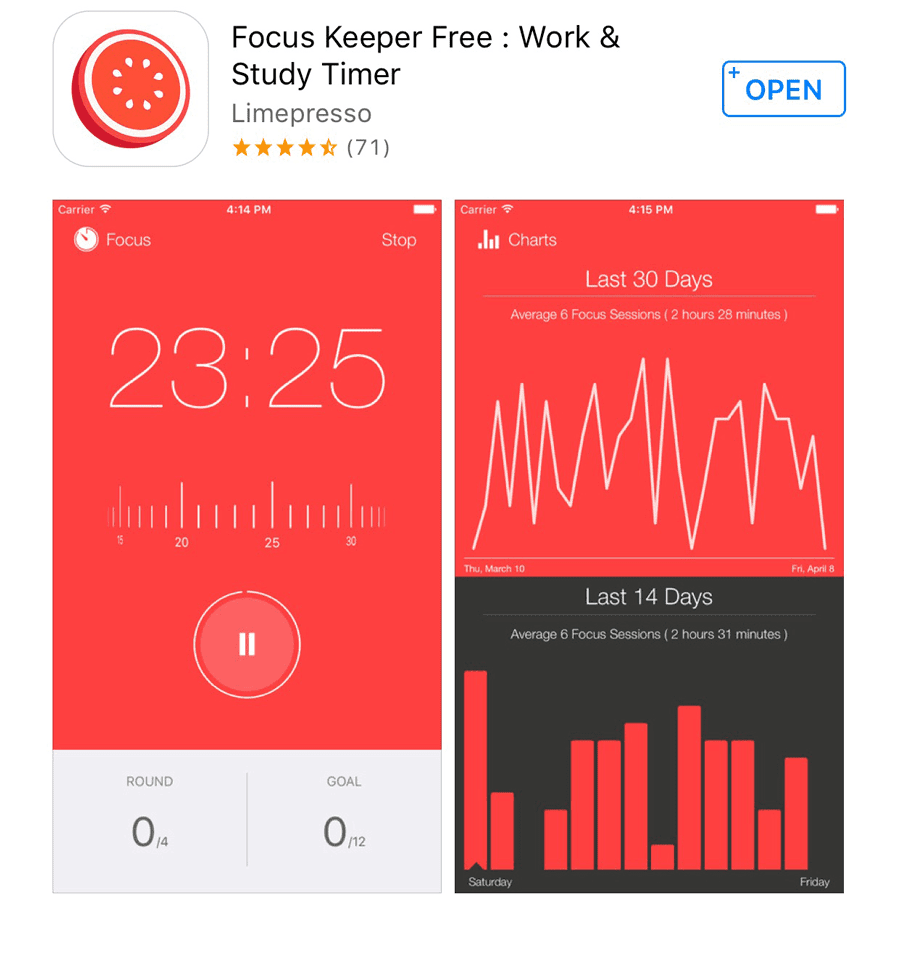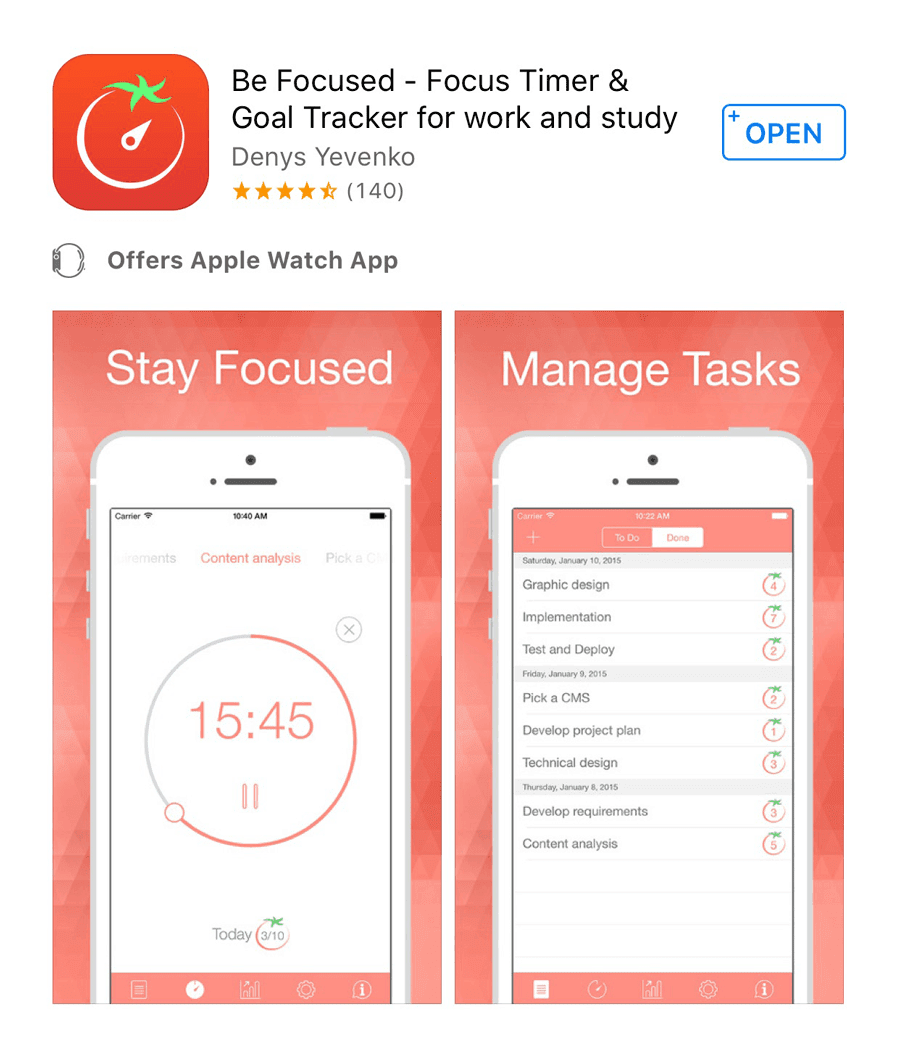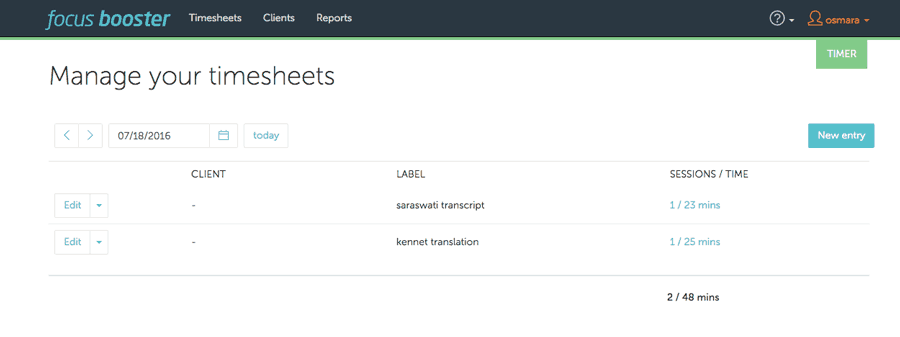– Plato “Work anxiety” has actually become a thing these days as we ongoingly chase the proverbial checkmark on the to-do list. “Time management” is a buzzword for all of us who struggle with procrastination on the daily. And while a certain level of stress (read: eustress) is healthy and productive for our work lives, too much ‘bad’ stress will wear you down. We’re constantly focused on getting things done and trying to do more and more in less work time. And we are paying for it mentally, emotionally, and physically. We wear the terms “multitasking” and “busy” as badges of honor, and yet, are we more effective than before? Are we outputting more? And if we are, is the quality at par? Recent findings suggest no…
The Cost of Multitasking & Distractions:
A study conducted by the University of California, Irvine tracked 40 information workers’ online activity over a 2 week period and found that the median duration of online screen focus was 40 seconds. [1] Toggling attention between different tasks results in it taking 50% longer to finish those tasks, compared to focusing on a single task through to completion to the end before beginning the next task. [2] Researchers from Standford’s Communication Between Human & Interactive Media Lab propose that some of us are more ‘multitaskers’ than others because of cognitive differences. ‘Heavy multitaskers’ have a more difficult time filtering out external environmental stimuli which creates more distractions for them. [3] An investigation published in the Journal of Experimental Psychology found that momentary interruptions (as those that happen when we’re multitasking with social media or digital channels) can derail the train of thought. Average interruptions of 4.4 seconds tripled the rate of errors. Interruptions averaging 2.8 seconds doubled the rate of errors. [4]
When acute or chronic stress impairs our performance at work and keeps us from focusing on what’s at hand, we know it’s time to do something about it. If you’re like me and work online all day, you know how important it is to streamline output and discipline yourself to not get lost in the digital whirlwind. If you’re also like me, you’re a total right brain that gets easily distracted (and even if you’re left-brained, you still get distracted) the fact is that we could all use a little efficient focus boost when it comes to getting more sh*t done more efficiently…
Enter the Pomodoro Technique:
I know you’ve been there: you’re getting ready to wrap up the workday, you review what you accomplished today and you start feeling heavy chested because you got nowhere near tackling most of your to-do list and you have no idea where the freaking time went! – Brian Tracy, Author: Eat That Frog!: 21 Great Ways to Stop Procrastinating & Get More Done In Less Time I hate that feeling. That’s why I thanked the Productivity & Time Management Gods above when my husband introduced me to the Pomodoro Technique. It literally changed my world… and my work! The thing I love most about this lifehack is how beautifully simple it is. It leverages the power of regular breaks as a means of maintaining sustained focus and workflow. This time management technique involves the alternation of timed work sessions (referred to as ‘Pomodoro sessions’) with short breaks and long breaks in between.
HOW IT WORKS: Step 1 – Choose a task and commit to working solely and only on that task for the next 25 minutes. Set a timer with an alarm for 25. Seriously – stop the world, put your phone away, log out of Facebook and Instagram, put your blinders on and get to work. 🙂 Don’t stop no matter what, unless the kitchen is on fire or something. Each uninterrupted 25-minute block of task time = 1 Pomodoro, the Italian word for tomato. Pomodoro creator Francesco Cirillo named it like this because he just happened to have a tomato-shaped kitchen timer handy. Step 2 – At the end of the 25 minutes when the timer rings, mark your task as complete and take a 5 minute break. Take a real break – step away from the computer and go do something “mindless.” Stretch, do a little asana (postures) practice on the yoga mat, step outside into the sunshine and breathe some fresh air, pet your dog, or fix yourself a nice cuppa something yum. Step 3 – Get ready to begin the next Pomodoro. Choose another task or continue with part 2 of the first task for another 25 minutes. Set your timer to 25. Stop the world and put your blinders on and only focus on that task for the next quarter of an hour! At the end of the 25 minutes, mark your task as complete.
Step 4 -Take another five-minute break (remember – a real break.) Step away from the computer. Step 5 – For every four 25-Minute Pomodoro Sets + Breaks, take a longer break of at least 30 minutes. Can you see how this simple time management technique can help boost your focus and productivity?
Top 5 Benefits of the Pomodoro Technique as a Management System:
This technique helps to really manage distractions by chunking down the tasks and setting yourself up to win, with each Pomodoro and each round. For me, it started to become a game I could easily win at because, at the end of the day, 25 minutes of uninterrupted workflow is actually very doable! And since on average it can take 23 minutes and 15 seconds to get back into the flow after an interruption, this is gold! [5]
The regular, programmed micro-breaks reduce mental + physical burnout, thereby helping you cultivate more reserves for the long haul. Whether it’s a one-man operation working from home, or an entire organization, this rule applies: “Organizations that don’t provide opportunities for employees to recover from work during the day risk lower employee effectiveness and productivity, leading to burnout, absenteeism, and higher staff turnover.” [6]
It also helps to take advantage of the brain’s natural reward centers. With each successfully completed set AND each time we mark our task as complete, we’re signaling our brain to register that as a reward and an accomplishment. “Researchers have found that the neurotransmitter dopamine is central to the human brain network governing motivation and a sense of reward and pleasure.” [7] Our brain then secretes the ‘feel-good’ chemical Dopamine, which has been linked to pleasure and motivation. This sets off a ripple effect that builds momentum and the desire to ‘do more’ and ‘keep going.’ In this sense, we can develop a positive ‘addiction’ to ‘winning the Pomodoro game’ each time.
Eliminate the feeling of ‘wasting time.’ Because you can track every task and really have a good grasp of your progress so the hours in the day don’t zoom by. Imagine not being left with that sense of ‘where the hell did the day go and what did I do?’ Instead, this technique helps you work with time and not against it.
The technique’s strategic micro-breaks are actually scientifically proven to help you become more focused + productive, and the kicker: more creative and inspired:
Some studies have demonstrated that the mind obliquely solves tough problems while daydreaming—an experience many people have had while taking a shower. Epiphanies may seem to come out of nowhere, but they are often the product of unconscious mental activity during downtime.” [8]
“After a while, you begin to lose your focus and your performance on the task declines… The brain is built to detect and respond to change… Prolonged attention to a single task actually hinders performance… Deactivating and reactivating your goals allows you to stay focused. From a practical standpoint, research suggests that, when faced with long tasks (such as studying before a final exam or doing your taxes), it is best to impose brief breaks on yourself. Brief mental breaks will actually help you stay focused on your task!” [9]
“Enhanced brain correlations during rest are related to memory for recent experiences. Our data show enhanced functional connectivity between the hippocampus and a portion of the lateral occipital complex (LO) during rest following a task with high subsequent memory compared to pre-task baseline resting connectivity.” [10]
Digital & Online Pomodoro Timers: Options To Get Your Pomodoro On!
What makes implementing this technique and being more productive even more fun? Using software that make it even easier to use. I use both free mobile apps and also a desktop version. These handy tools help me to track each Pomodoro I complete in detail. The following are the ones I’ve used and personally recommend. Free Mobile Apps:
Focus Keeper Word & Study Timer
Be Focused – Focused Timer & Goal Tracker For Work & Study
Free Desktop App:
- FocusBooster
I’m sure this tools will help you just as it’s helped me keep my work anxiety at bay. In a world that’s constantly yammering at us for our attention, these tools and this technique put the power back in our hands. Few things feel as good as knowing you’re being on point, focused, and productive. It can really boost your self-confidence and belief in your own capabilities. You’ve got great things to do in this world and inspiring work to create that will make a real impact in the lives of many, so don’t delay. Being effective at birthing inspiring work is a duty and a privilege. From a yogic philosophy stance, being able to deliberately sustain one-pointed focus over time, or Dharana in Sanskrit, is one of the 8 Limbs of Yogic Living. We can practice Dharana with each Pomodoro we successfully complete. We can weave these timeless yogic principles into our lives and work by remembering that sustained focus is the way of the Master and the way of the most creative and efficient. As we become proficient in this Art of Single Focus, we gain more control over ourselves and our world and embody a true Sovereign Creator. REFERENCES – BKS Iyengar, Author of Light on Yoga : [1] http://www.ics.uci.edu/~gmark/Home_page/Research_files/CHI%2016%20Multitasking%20and%20Focus.pdf ]2] Richard Gendreau. 2007. The new techno culture in the workplace and at home. Journal of American Academy of Business, Cambridge, 11(2), 191-196. [3] http://www.ncbi.nlm.nih.gov/pubmed/19706386 [4] http://psycnet.apa.org/index.cfm?fa=buy.optionToBuy&id=2013-00033-001 [5] https://www.ics.uci.edu/~gmark/chi08-mark.pdf [6] https://www.rotman.utoronto.ca/Connect/MediaCentre/NewsReleases/20131001freedom.aspx [7] http://www.scientificamerican.com/article/dopamines-central-role-brains-motivation-reward/ [8] http://www.scientificamerican.com/article/mental-downtime/ [9] https://www.sciencedaily.com/releases/2011/02/110208131529.htm [10] http://www.cell.com/neuron/abstract/S0896-6273%2810%2900006-1


